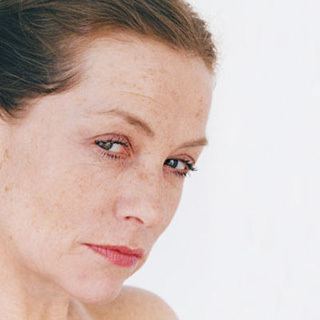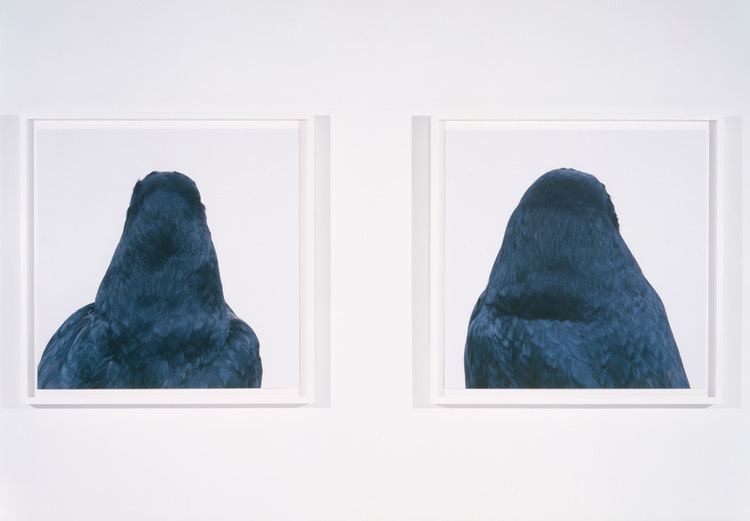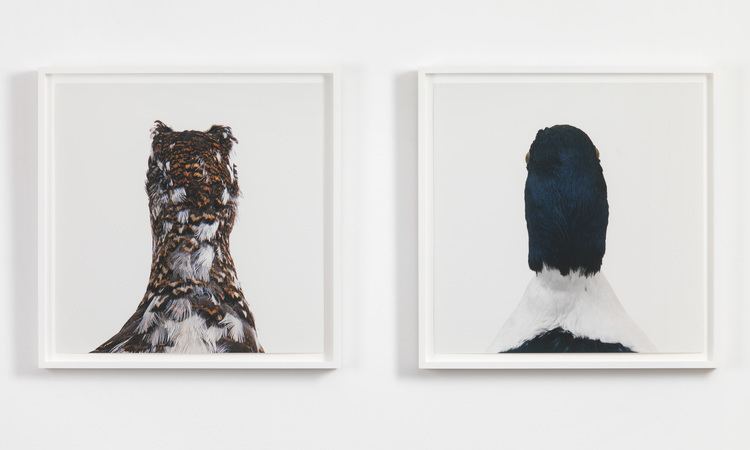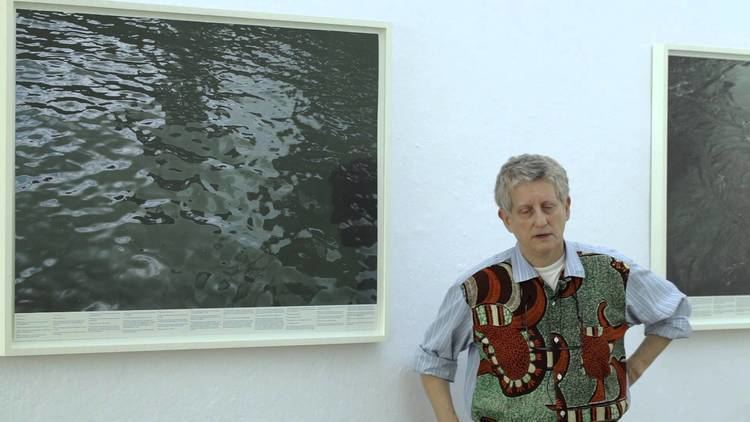Nationality American | Name Roni Horn Role Visual artist | |
 | ||
Born September 25, 1955 New York Artwork Untitled (Aretha), Thicket No. 2 Periods Postminimalism, Minimalism Awards Guggenheim Fellowship for Creative Arts, US & Canada Books You Are the Weather, Another water, This is me - this is you, Weather reports you, Her - her - her & her Similar People John McCracken, Mariko Mori, Thomas Kellein | ||
Roni horn saying water
Roni Horn (born September 25, 1955) is an American visual artist and writer. Horn's oeuvre, which spans almost four decades, encompasses sculpture, drawing, photography, language, and site-specific installation. The granddaughter of Eastern European Jewish immigrants, she was born in New York where she lives and works.
Contents
- Roni horn saying water
- Roni horn water art21 exclusive
- Early life and education
- Work
- To Place
- Installations
- Photo series
- Sculpture
- Drawings
- Exhibitions
- Collections
- Documentaries on Horn
- References

Roni horn water art21 exclusive
Early life and education

Horn quit high school a year early at 16 and enrolled in the Rhode Island School of Design. She received an MFA in sculpture from Yale University. Since 1975 Horn has traveled often to Iceland, whose landscape and isolation have strongly influenced her practice.
Work

Horn explores the mutable nature of art and identity through sculptures, works on paper, photography, and books. She describes drawing as the key activity in all her work because drawing is about composing relationships. Horn’s drawings concentrate on the materiality of the objects depicted. She also uses words as the basis for drawings and other works. Horn crafts complex relationships between the viewer and her work by installing a single piece on opposing walls, in adjoining rooms, or throughout a series of buildings. She subverts the notion of ‘identical experience’, insisting that one’s sense of self is marked by a place in the here-and-there, and by time in the now-and-then. She describes her artworks as site-dependent, expanding upon the idea of site-specificity associated with Minimalism. Horn’s work also embodies the cyclical relationship between humankind and nature—a mirror-like relationship in which we attempt to remake nature in our own image.

For the past 30 years, the work of Roni Horn has been intimately involved with the singular geography, geology, climate and culture of Iceland. Since her first encounter with the island as a young arts graduate visiting on a fellowship from Yale, Horn has returned to Iceland frequently over the years. Iceland has been muse and medium to Roni Horn.
To Place
In an interview, Horn was quoted as saying that "the entrance to all my work... which is extremely important to me" is the ongoing series of books entitled To Place (1990-) concerning Iceland. The books consider identity, site, and nature through photographs of landscapes, ice, rocks, swirling water, and people; most of the images are accompanied by descriptive, classificatory, or literary texts. In describing her attraction to the landscape, Horn states:
The drama comes from its youth. The landscape is unique in that the geology is very young. It’s like a labyrinth in the definitive sense. It’s big enough to get lost in, but small enough to find yourself. There is little erosion and, as a result, unexpected symmetries exist in unexpected places. America has everything Iceland has, but it’s ten thousand, twenty thousand, one hundred thousand years older... Growing up in a very “old” landscape—New York City—its origins are secreted from the present. I mean that the geological aspect of the landscape in New York City can only be experienced theoretically at this point. In Iceland, you understand empirically exactly what this place is: its what and how. That accessibility effects the nature of one’s experience, the experience of the world. Any place you’re going to stand in, in any given moment, is a complement to the rest of the world, historically and empirically. What you can see in that moment, what you can touch in that moment, is confluent with everything else.
Reproducing 13 watercolour and graphite drawings, Bluff Life (1990) was produced in 1982 during a two-month stay in a lighthouse off the southern coast of Iceland in a town called Dyrhólaey. The series totals of thirteen drawings, all made on note cards. The second book, Folds (1991), is a collection of photographs documenting extent sheepfolds; a unique indigenous structure found throughout the island. To Place: Verne’s Journey (1995), the fifth in the series, refers to the North Atlantic island where the book Journey to Center of The Earth (1864), by Jules Verne, began. Horn’s volume opens with a series of aerial geographic views of Iceland, continues with multiple images of the island’s geological formations, and concludes with images of crashing waves. A photographic essay, the seventh volume Arctic Circles (1998) records the endless horizon of the North Sea, the feathers of an eider nest, and the rotating beacon of a lighthouse, invoking in form the very circumference of Iceland. Doubt Box (Book IX) (2006) is a collection of cards rather than a bound volume. Printed on both sides, the cards show pictures of glacial water, taxidermied birds, and of the same face, a little older.
In 2004-2006, the books were selected as some of the most important photobooks in history. A 2009 journal article stated that the nine To Place books "together constitute one of the most important groups of artists' books since Ed Ruscha's 1960s books and Bernd and Hilla Becher's publications on industrial architecture." Other publications include Dictionary of Water, This is Me, This is You, Cabinet of, If on a Winter's Night, Her, Her, Her, & Her, Wonderwater (Alice Offshore), and Index Cixous, 2003 – 05.
Installations
Weather, inspired by her experiences on Iceland, has played an important role in Roni Horn's work. She has created several public artworks, including You Are the Weather—Munich (1996–97), a permanent installation for the Deutscher Wetterdienst bureau in Munich. You in You (1997), a rubber-tiled walkway in Basel’s east train station, mimics an unusual basalt formation of Iceland. Some Thames (2000), a permanent installation at the University of Akureyri in Iceland, consists of 80 photographs of water dispersed throughout the university’s public spaces, echoing the ebb and flow of students and learning over time at the university. In 2007 she undertook Artangel’s first international commission, creating Vatnasafn / Library of Water, a long-term installation in the town of Stykkishólmur, Iceland. The installation is made up of water collected from Icelandic glaciers. “Weather,” observes Roni Horn, “is the key paradox of our time. Weather that is nice is often weather that is wrong. The nice is occurring in the immediate and individual, and the wrong is occurring systemwide.” The "Library of Water" is housed in a former library building in the little town of Stykkisholmur on the west coast of Iceland. Roni Horn noticed the building during a trip through Iceland in the 1990s. It is located at the high point of the town, overlooking the harbour and the sea. The architecture is influenced by that of lighthouses. It was conceived by Horn in 2004 as a sculpture installation and a community center, offering both a space for quiet reflection and a room for meetings and gatherings.
In 2004, the entire floor plan of Hauser & Wirth in London was given over to an installation by Horn entitled Agua Viva for the exhibition Rings of Lispector The installation consisted of interconnecting rubber tiles into which fragments of text from Hélène Cixous' English translation of Clarice Lispector's Agua Viva (or The Stream of Life) have been embedded in contrasting shades of tan-colored rubber into the floor. Horn manipulated passages of the text to shape partial and overlapping rings and loops, playing with the order and coherence of Lispector's text. The rubber floor's dimensions at Hauser & Wirth London were approximately 1,500 feet square, with each rubber tile 69 inches square. It contained 25 "rubber floor drawings" with additional plain tiles so that the piece would fit wall to wall.
Hélène Cixous also penned the accompanying monograph for the installation, and in the poetic and philosophical text, reflects upon the experience of encountering Lispector's text in this new, installation-based context: "The verbal rubber things are spread out on the flat horizontal surface of a floor. When one realizes this, one's whole body suddenly feels the urge to adopt a totally displaced and never before attempted reading position. Yesterday, reading, one had the book in front of one's eyes. Face to face. All of a sudden one finds it underfoot."
Photo series
Horn's first photographic installation, You Are The Weather (1994-1996), a photographic cycle featuring 100 close-up shots of the same woman, Margret, in a variety of Icelandic geothermal pools, deals with the enigma of identity captured through a series of facial expressions dictated by imperceptible weather changes. Horn described her goals for this project in the Art:21 documentary series, "“In the case of You Are the Weather, I was curious to see if I could elicit a place from her face, almost like a landscape. Not in the literal sense, but how close those identities were.” Notes written by Horn about this work were included in the catalogue that accompanied Horn's 2009 traveling retrospective Roni Horn aka Roni Horn. The two-volume book included a Subject Index that brought together writings and reflections on works, themes, titles and topics related to Horn's practice. About You are the Weather, Horn writes, "The way this work is shot and installed, the viewer is voyeurized by the view. You are surrounded by a woman who is staring at you." Curator Donna De Salvo continues this suggestively erotic interplay between subject and object in one of her own contributions to the Subject Index, "You are the Weather depicts a living, rather than an inert, thing. Horn complicated the notion of surface and skin. This treatment of the face smudges the distinction between object and subject. Just who is the 'you'? Of course all answers are completely dependent upon who chooses to inhabit the role of 'you.' It's a discovery process, which in some ways reflects the making of the work itself. The subtle and not so subtle difference in these photographs make it difficult for a viewer to dismiss any one image as being identical to the one next to it. 'You' have to look hard."
Many of the images in You Are the Weather were published in one of the To Place volumes. You are the Weather, Part 2, follows the same form as ‘You are the Weather’ and features the same model, 15 years later. The series Untitled (Isabelle Huppert) 2005, capture the iconic actress in many different moods and characters, a sustained paradox of fleeting expressions. In each sequence, Huppert slips into one of the characters she portrayed on screen – Erika, Lena, Claire, Charlotte, Dominique, Jeanne, Mika, Isabelle, Marie, Emma, Beatrice and others – so that her face expresses a personality that does not exist in reality but only in the film.
The gesture of doubling – as an aesthetic and conceptual strategy – has been a recurrent motif for Horn since 1980, a tool that invites careful scrutiny from the viewer. In 2008, Bird (1998–2007), the artist’s long-running photographic series of taxidermied Icelandic wildfowl were shown for the first time. Photographed at close range against white backgrounds (as though obeying the conventional format of studio portraiture) the birds are viewed from behind, their unique physiognomies and markings resulting in inscrutable shapes and patterns on the photographs’ surfaces. Despite the singular form of the title the birds in this series are all presented in pairs, images that are hung side by side one another highlighting the differences and similarities between the two.
Installed on all four walls of the gallery to form a continuous horizon line, the 45 color images of Horn's installation Pi (1998) create a band of syncopated glimpses of another world. Identical in height, slightly varying in width (square, vertical rectangle, horizontal rectangle), evenly spaced and united by a certain blueness of tone, the photographs are portraits of a middle-aged man and woman; close-ups of stuffed animals and feather-strewn birds' nests; stills from Iceland's favorite television soap opera, The Guiding Light; and the beam of a lighthouse cutting through the night. There are also images of the interior of a plain house near the Arctic Circle; expanses of tundra, and of ground scattered with feathers in some instances and with stuffed dead birds in others. Finally, there are immense expanses of open edgeless sea, shown in different weather and at various times of day. The pictures were taken over a six-year period in Iceland.
Still Water (The River Thames, for Example) (1999) is a single work composed of fifteen photographic offset lithographs, each 30 1/2 x 41 1/2". It is in the collection of the Museum of Modern Art It was commissioned around 1998, and Horn has noted that it came about at the same time as the end of a long love relationship. Each of the 15 lithographs features a photograph of the surface of the River Thames that has been annotated with many small white numerals that correspond to a bar of footnotes that runs along the lower border of each image. In one footnote, Horn puts a fine point on the lens through which this project looks at the river, "(41) The Thames has the highest rate of suicides of any urban river. Maybe it's not the highest but it's close. It doesn't really matter because even if it doesn't, it looks like it does." Horn describes these annotations as footnoting "whatever I was thinking of at the time, what the river provoked in me, and what was in the river itself." The result is a mixture of poetic fragments, reports culled from interviews and newspaper clippings about deaths (primarily planned suicides) by drowning in the Thames, references to Joseph Conrad's Heart of Darkness, questions about identity and consideration of the subject of water from many different perspectives. In most cases, the photographs were taken with such exactitude that the moving surface of the water is stopped in highly detailed topographies, so that the substance of water is shown in more sculptural views than can usually be observed by the naked eye.
Sculpture
Things That Happen Again: For a Here and a There (1986-1991) was installed at the Chinati Foundation by Donald Judd and Roni Horn in 1988. The work consists of two identical truncated cones that are 35 inches long, tapering from a diameter of 17 inches to 12 inches. The pair is part of a 1986-1991 suite consisting of four sets of paired, solid copper forms, each hand-lathed to duplicate mechanical identity. The entire suite is titled Things That Happen Again, and also includes For Two Rooms, For a This and a That, and For Things that are Near. In describing the piece's intention, Horn states the importance of the two objects' apparent duplicity:
The narrative involves the recognition of uniqueness through the sequential experience of things which are identical. Then the subsequent and irreversible loss of the unique identity. Obviously the notion of being identical is a purely ideal one since when you have two things, no matter how perfect the identity, you always have a this and a that, a here and a there. In both pieces we’re talking about the critical role of relation in defining the form.
In 1990, during Horn’s solo exhibition at the Museum of Contemporary Art in Los Angeles, Félix González-Torres encountered her sculpture Forms from the Gold Field (1980–82), two pounds of pure gold compressed into a luminous rectangular mat. In 1993, he made Untitled (Placebo-Landscape-for Roni). In response, Horn made a second gold field piece, Gold Mats, Paired-For Ross and Felix (1994-1995), dedicated to the late González-Torres and his partner Ross Laycock.
Horn's 1993 series When Dickinson shut her eyes, comprises eight square aluminium poles of different lengths leaning casually against the gallery wall, each bearing a line from Emily Dickinson's poem A Wind that rose; following in the conceptual tradition started by Joseph Kosuth and Lawrence Weiner, Horn's homage to Dickinson investigates the possibilities of language as sculptural form. Other works in her series White Dickinson include sentences from the published letters of Dickinson.
Pink Tons (2008) a Solid cast glass cube 1219 x 1219 x 1219 mm, weighing 4536 kg manufactured by Schott, a German glass manufacturing company with whom she has worked since her student times. They also have manufactured the columns of her Library of Water in Iceland.
Horn's 2009-2010 work Well and Truly, consists of ten solid cast glass parts, each measuring 91.5 cm in diameter and 45.5 cm in height. Well and Truly is part of a private collection, but was included in an exhibition of the same title at Kunsthaus Bregenz from April 24 to July 4, 2010. The 10 glass elements are cylinders in shades of blue and pale blue greens. Like earlier glass sculptures Horn has produced, these works bear rough, textured sides that evidence the process of casting used to produce them, and smooth, fire polished top surfaces that are, from different angles, reflective and seemingly endless in depth. In Briony Fer's essay for the catalogue that accompanied Horn's 2009 traveling retrospective Roni Horn aka Roni Horn, she writes about the experience one has with the surfaces of these glass works, "There is an almost unbearable precision in the effect of the light on the smooth surface of glass or an accidental but infinitesimal flaw in the surface that creates an effect of massive turbulence in certain lights and absolutely none in others. Depending on the angle of view, glass has a surface of either razor sharpness or infinite depth. At one moment its surfaces can seem as thin and dazzling as the gold leaf laid out on the floor of Paired Gold Mats, for Ross and Felix, at another it is purely transparent. You cannot see the change happenings in perception; it is only visible in its sudden effect when one kind of surface has switched invisibly into another. You can see into it and then suddenly the light changes, and it has no inside at all--only a surface and a shine that reflects outward. The line between the two is so fine that in perception it no longer exists. But it is our experience that fractures in an instant."
Referencing a passage from Canadian poet Anne Carson’s book ‘Plainwater’, Untitled (“Consider incompleteness as a verb.”) (2010–12) is composed of two large glass cubes, which are matte on the sides with a smooth, glossed surface, resembling freshly cut blocks of ice. The cubes are made from a two-colour glass which reflect their surroundings. Each piece is a subtly different shade of blue and, depending on the type of light in the gallery, the time of day, and the weather outside, these shades shift from violet to lavender to aquamarine.
Drawings
While at Yale, Horn also began her drawing practice, which she describes as “absolutely essential to me, although not to my viewer. My drawing was always about my relationship to it, not the audience’s.” Produced from the 1980s onwards, her drawings are collage-like blots of pigment applied to sometimes torn and (once again) diagrammatically pieced-together sheets of paper. Small markings – words and numbers – track the work’s progression built up with the recomposing of the image. In the 1990s, Horn's drawings grew in scale.
Exhibitions
Horn's first solo exhibition (outside the university) was held in 1980 at the Kunstraum München. With two New York shows at the Paula Cooper and Leo Castelli galleries, Horn's career accelerated in the late 1980s. Horn received the CalArts/Alpert Award in the Arts in 1998, several NEA fellowships, and a Guggenheim fellowship. She has had one-person exhibitions at the Art Institute of Chicago (2004); Centre Georges Pompidou, Paris (2003); Dia Center for the Arts, New York, and Museu Serralves, Porto (2001); Whitney Museum of American Art, New York; Kunsthalle Basel (1995); Rencontres d'Arle s festival, France (2009) and Tate Modern, London (2009). Group exhibitions include the Whitney Biennial (1991, 2004); Documenta (1992); and Venice Biennale (1997), among others In 2004 she was a visiting critic at Columbia University.
In November 2009, the Whitney Museum of American Art opened a survey show of Horn’s work. Titled "Roni Horn aka Roni Horn", the show travelled to the Institute of Contemporary Art in Boston (2010), the Tate Modern, London (25 February - 25 May 2009), and the Collection Lambert in Avignon (21 June - 4 October 2009).
Recent solo shows include 2011's, 'Double Mobius', at FLAG Art Foundation, New York and 'Recent Work' at Hauser & Wirth, London. In 2016 Roni Horn had a solo exhibition in Tilburg, The Netherlands, at De Pont Museum of Contemporary Art.
Horn is represented by Hauser & Wirth, Xavier Hufkens and Kukje Gallery, Seoul.
Collections
Roni Horn’s works can be found in the collections of many institutions, including the Museum of Modern Art in New York, the Solomon R. Guggenheim Collection, museum Krüller-Müller in Otterlo (the Netherlands), the Kunstmuseum in Basel and Tate Modern in London, UK.
Documentaries on Horn
Roni Horn was one of the artists featured on PBS' Art:21 series of biographies of contemporary artists.
